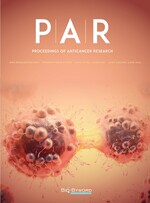Abstract
Objective: To observe the changes in insulin resistance in patients with gestational diabetes mellitus (GDM) based on the detection of serum microRNA-372-3p and glucose transporter protein 4 (GLUT4) levels. Methods: We conducted a retrospective cohort study of 42 patients who were diagnosed with GDM and hospitalized in our hospital during the period from January 2017 to December 2021 and another 42 patients who had normal pregnancy during the same period by collecting their clinical data. We analyzed their serum microRNA expression profiles and miR-372-3p levels to study the relationship between GDM and insulin resistance. Results: The relative expression of miR-372-3p in the serum of patients in the GDM group was significantly higher than that of patients in the control group, but the GLUT 4 level of the GDM group was significantly lower than that of the control group (P < 0.05). Compared with the control group, the GDM group had significantly higher levels of fasting blood glucose (FBG), fasting insulin (FINS), 2-hour postprandial blood glucose (2h-BG), total cholesterol (TC), triglyceride (TG), and homeostatic model assessment for insulin resistance (HOMA-IR) index but significantly lower homeostasis model assessment of ?-cell function (HOMA-?) index (P < 0.05). The relative expression of miR-372-3p in serum was independently and positively correlated with HOMA-IR, while the level of GLUT4 was independently and negatively correlated with HOMA-IR (P < 0.05). Conclusion: Glycosylated hemoglobin test in the early stages of pregnancy (12–13 weeks of gestation) is important to ensure the health of pregnant women and fetuses. The screening and intervention for elevated glucose in pregnant women act as a guideline for the treatment of GDM. Patients with insulin resistance and related complications such as hyperinsulinemia and hypoglycemia should be given priority.
References
Zhu S, Gu L, 2022, Correlation Between miRNA-372-3p, miRNA-149 and miRNA-7 and Insulin Resistance and Pregnancy Outcome in Patients with Gestational Diabetes Mellitus. China’s Maternity and Child Care, 5(20): 3841–3845.
Xing HM, Liang J, Tian M, et al., 2022, Relationship Between Serum Ferritin, CAT, MCP-1 and Insulin Resistance in Gestational Diabetes Mellitus and the Influencing Factors of Pregnancy Outcome. Modern Biomedical Progress, 22(18): 3534–3538.
Chen L, Relationship Between Serum miR-146a Expression and Insulin Resistance in Patients with Gestational Diabetes Mellitus. Journal of Practical Medical Technology, 29(03): 279–282 + 337.
Wang Y, Mao N, Chen S, 2021, Serum FABP-4, ADP, RBP4, Nesfatin-1 and Insulin Resistance and Diagnosis in Patients with Gestational Diabetes Mellitus. Chinese Journal of Family Planning, 29(08):1718–1721 + 1726.
Wang K, 2021, Changes in Serum Ferritin and Lipocalin and Their Relationship with Insulin Resistance in Patients with Gestational Diabetes Mellitus. Chinese Community Physician, 37(15): 54–55.
Huang H, Jia H, Wang X, et al., 2021, Expression Levels of miRNA-508-3p and HGF in Placental Tissues of Patients with Gestational Diabetes Mellitus and Their Effects on Trophoblast Insulin Resistance. Journal of Jilin University (Medical Edition), 47(01): 187–195.
Bao J, 2020, Effect of Integrated Diet and Exercise Intervention on Glycemic Control and Insulin Resistance in Patients with Gestational Diabetes Mellitus. Journal of Aerospace Medicine, 31(12): 1514–1516.
Shi F, Si H, Huang J, 2020, Relationship Between Serum miR-126 Expression and Insulin Resistance in Patients with Gestational Diabetes Mellitus. Chinese Journal of Diabetes, 28(06): 423–427.
Bu C, Huang X, 2020, Relationship Between Insulin Resistance Levels and Sex Hormone Levels in Patients with Gestational Diabetes Mellitus. Chinese Journal of Family Planning, 28(06): 946–949.
Dong C, Wu G, Zhang Y, et al., 2020, Relationship Between Serum miR-149 Levels and Insulin Resistance in Patients with Gestational Diabetes Mellitus. Western Medicine, 32(05): 700–703.
Li R, Ouyang C, Zhang Z, et al., 2020, Changes in Serum Chemerin in Patients with Gestational Diabetes Mellitus and the Relationship with Insulin Resistance. China Maternal and Child Health Research, 31(01): 109–112.
Zuo X, Kong F, Su T, 2018, Study on the Expression of Serum tOC and ucOC and Their Relationship with Insulin Resistance in Patients with Gestational Diabetes Mellitus. China Maternal and Child Health Care, 33(24): 5764–5766.
Yang J, Wang X, Yang JN, 2018, Relationship Between Serum Lipocalin, Chemokine, Retinol-Binding Protein 4 and Insulin Resistance in Gestational Diabetes Mellitus Patients. China Family Planning and Obstetrics and Gynecology, 10(07): 74–77.
Li D, Liu Y, Su D, et al., 2018, Exploring the Relationship Between Placental Tissue Lipoproteinase Gene Polymorphisms and Insulin Resistance in Patients with Gestational Diabetes Mellitus. Modern Preventive Medicine, 45(12): 2154–2157 + 2194.
Ke H, Guo L, Ding H, et al., 2014, Relationship Between Serum Resistin and Insulin Resistance in Patients with Gestational Diabetes Mellitus in Mid-Pregnancy. Laboratory Medicine, 29(09): 921–924.
